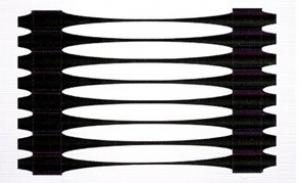Many people may not be familiar with the term “Geotextiles” although it has been a buzz phrase in construction and engineering circles. But let me tell you, it is one of the most interesting things to discuss as far as our infrastructure and environment are concerned. So what exactly are geotextiles? Let us delve into this captivating subject.
Firstly, geotextiles refer to permeable fabrics that are made using synthetic materials such as polyester, polypropylene or polyethylene. They work together with soils, rocks and other elements to improve performance in various civil engineering projects. These textiles are strong, durable and usable in a number of ways; for example they can be used in strengthening roads, building embankments or controlling soil erosion through filtration.
In particular, geotextiles help reinforce and stabilize soil. This is useful for landfills, slopes and retaining walls where the ground is weak or unstable. Incorporating geotextiles into construction makes the structure more stable and durable thereby reducing its chances of subsiding over time.
The other critical aspect of geotextiles is their role in filtration and drainage areas too. To some extent, these materials can assist in separating different types of soils thus stopping them from mixing up much hence enhancing drainage effectiveness while minimizing erosion potential. This is particularly important on river banks where water flows must be controlled or areas prone to floods.
However, there exist many applications for these fabrics apart from the above mentioned ones. Geotextile will also serve as an effective means of controlling erosion thus protecting slopes as well as embankments against wind/weathering effects when employed on it. By acting like a barrier towards soil loss, geotechnical fabric protects the integrity of structures.
Moreover, there are also environmental advantages associated with geotextiles most importantly among which include durability due to being made out of synthetic materials that last long therefore reducing frequent replacement needs saving money as well as reducing the environmental impact of manufacturing and disposing of materials.
Moreover, geotextiles are also used in various environmental undertakings such as creating wetlands or making habitats. Geotextiles will enable creation of new wildlife habitats and improve ecosystem health by providing a stable ground for plants to grow on.
Hence, geotextiles are an all-around valuable material within construction and engineering. They have numerous benefits ranging from reinforcement and stabilization of soil to improved drainage and erosion control. Considering their good impact on environment, it is no surprise that more projects are favoring geotextile usage.
Next time you see a construction site or civil engineering works, look closely; you may find out that those geotextiles are playing a big role in the success of the project. And who knows? You may even be amazed by how far this innovative material can go and its numerous applications.







